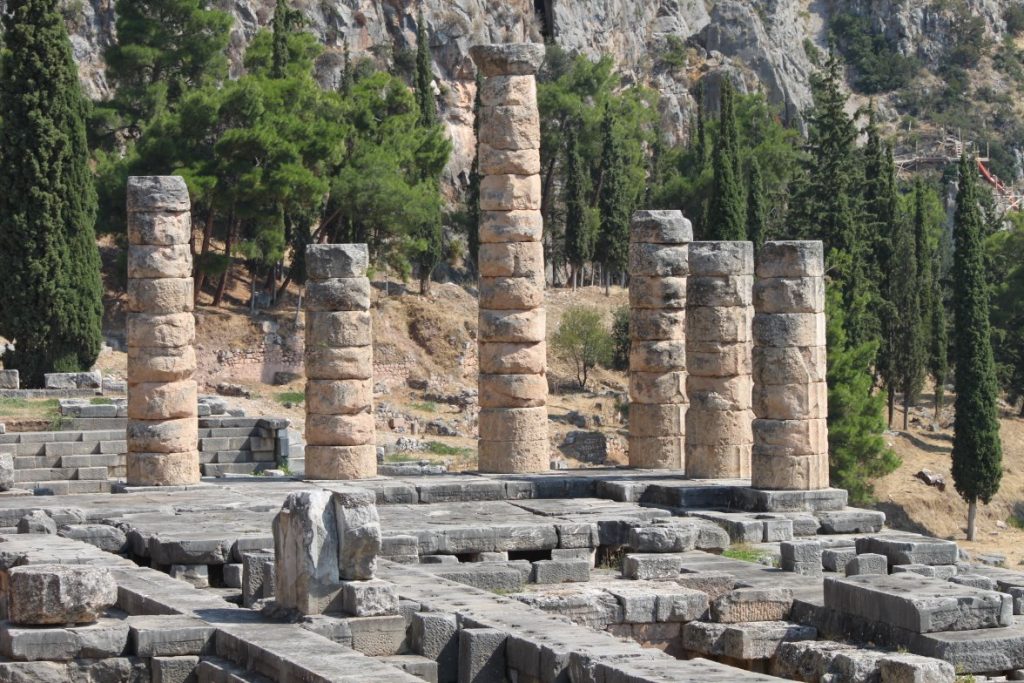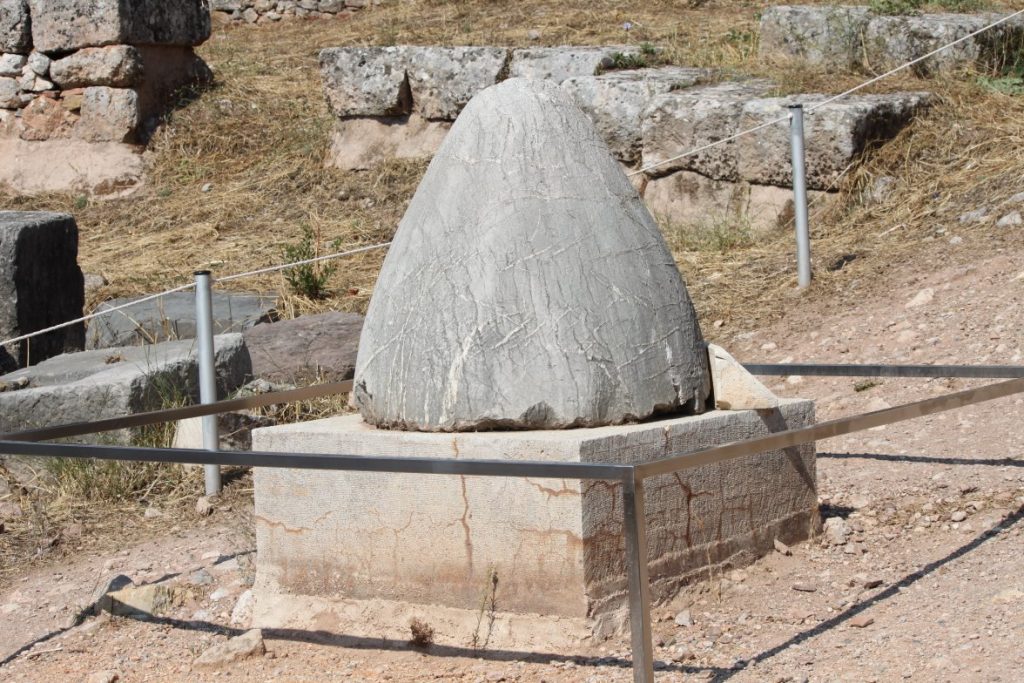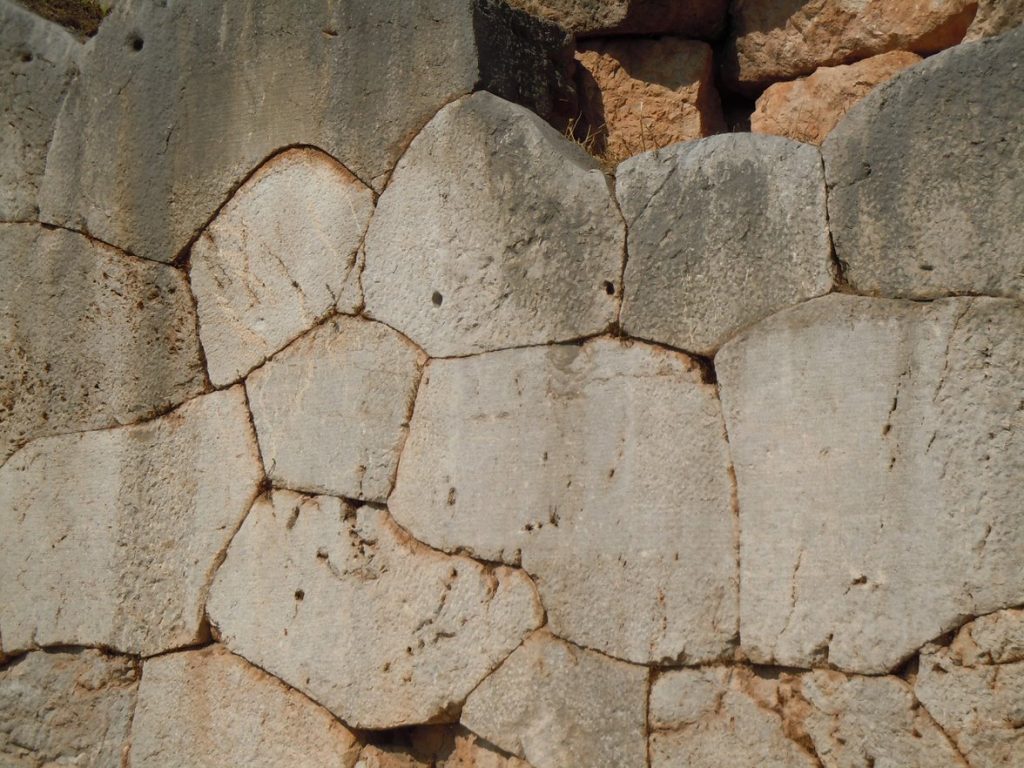It is Monday morning here in Athens. We took a day trip to Delphi yesterday that left at 800 and returned at 7:00. It was too late to digest everything we saw, get the pictures organized, and write up something about the day when we got back. I will use some time this morning to do that.
We had planned to use the time we had this morning before we depart on the cruise to perhaps go to the Acropolis Museum or to find the Agora we missed on Saturday, but we think that wandering around in Athens may not be a good idea. The tension over the potential default and Greek austerity measures is palpable. When we got back last night we went past Syntagma Square, just across from Parliament, and there were already groups of demonstrators setting up. As we drove the streets taking people back to their hotels, we saw knots of young men standing on street corners just waiting for “something” to happen. Today there are rumors of a taxi and transport strike and the hotel has told us that if necessary an employee will drive us to the port. All the time we have been here, the number one topic of conversation has been about the turmoil and how the people just won’t take it any more. The whole place could be on strike in the next 24 hours. Greeks we have spoken to are very discouraged and angry. They feel that they have nothing left to lose.
But… our trip to Delphi will be a highlight of any of our vacations. Just as the reality of Athens and the Acropolis is different from what we had read/thought, Delphi was different from our expectations. Delphi (dell-fee, not dell-fi) is about 3 hours from Athens by bus. The drive gave us a chance to see some of the countryside. We saw lots of mountains. We learned that Greece is the 3rd most mountainous country in Europe (Switzerland and Austria are not 1 and 2, btw) after Norway and Albania. [Who knew?] We saw quite a bit of cotton and corn. We saw more signs in English than you might think. It took us about a half hour to get out of the city, and from there on we did not see anything larger than a small town. We went past Thebes (Thiva) which was once an important city-state and is now nothing more than a small town. Then we started climbing into the mountains. We went up Mount Parnassus and through a ski town [skiing? Greece?] and on to Delphi. That must have been quite a trip 2,500 years ago. Our guide gave us lots of information on the way and while we were at the site. I’m not trying to be a guide book so I am going to have to let the pictures we took largely speak for themselves.
Delphi was an important religious site from at least 1600 B.C. to the 4th century A.D. My recollection/impression was that the Oracle was in a cave in the hillside, but I learned better. You may know that people would go there to get a glimpse of the future from the priestesses who would breathe in the vapors from the cave underground so they could hear what the gods were saying. What we learned was that the cave was underground but that the temple of Apollo was built over it. I had the idea that Delphi was a simple hole in the side of a hill leading into a cave and was I ever wrong. [That’s what I get from believing Homer.] Delphi is a big complex dedicated to Apollo. He, after stealing blood from the snake Python, had the ability to know the future. Zeus had determined that Delphi was the center of the world, and what better place to see the future.
There are a couple of rocks (omphalos) to mark the “navel” site. [http://www.philipcoppens.com/delphi.html is an interesting site for more information.] Of course, prophesy, handled correctly, can be a big business and it seems that was true here. When the Romans took over, they built a marketplace right on the way to the temple. [Greeks would never do that our guide told us.] Since the site was important, people contributed buildings, statues, treasure and other things. They weren’t paying for a good oracle of course, but simply honoring the gods. Oddly enough, the more they offered, the better the oracle seemed to be—at least in some cases. At one point an earthquake largely destroyed the site and it was rebuilt. [You would have thought the oracle would have planned for that.] A later earthquake buried much of the site which is good for us, because in the late 1800s there was much to be discovered.
We saw a wall constructed in a way unlike anything else we had seen. It is called the polygonal wall and you can see why. Many of the rocks have story inscribed in tiny Greek letters of former slaves who had “earned” their freedom and were writing of their gratitude.
After we walked around the site being amazed and taking pictures, we went to the nearby museum. The museum is filled with artifacts from the site. Surprisingly, we were allowed to take pictures inside and we took quite a few.
No flash was allowed, so the color is muted in some cases. I have posted about 50 pictures and captions on the pictures page. Delphi was so interesting that I created a separate gallery, called “Delphi” for the pictures. I tried to arrange the pictures as if you were walking up to the site with us and following us through the museum. We took more than 400 pictures, and I’ll post more to the Fall 2011 album when I have time. I hope you enjoy what we have posted.
Kate: as we drove up to Delphi and walked the site and listened to the guide talking about Greek mythology and history we thought specially of you. Thanks for the book on myths. It helped prepare me for this trip.




Kate Jacobs
26 Sep 2011I LOVED reading about your trip to Delphi! What a treat!! And your photos are amazing!
Tevya Shaver
27 Sep 2011Great narrative! We love reading about your experiences and can’t wait to hear and see more…